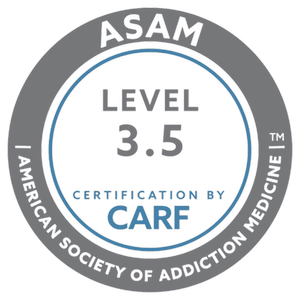Three Surprising Facts About White-Collar Workers and Addiction
While not in our everyday verbiage, blue and white-collar workers are distinct in many areas. If you have listened to a Jeff Foxworthy comedy sketch within the last 15 years, then you would know all about what makes a blue-collar worker.
When it comes to white-collar workers, there doesn’t seem to be much material, comedic or otherwise, to work with.
Addiction is often associated with the blue-collar working class but there are some surprising statistics out there that point to the true story being just the contrary.
Today, let’s dive into some stats that may shock you when it comes to white-collar workers and addiction.
Addiction is a Huge Deal in the Legal Sector
Hollywood often spins lawyers and judges in a positive manner. Whether it’s the cool characters of Suits or the comedic duo of Franklin and Bash, Hollywood often misses the mark when it comes to portraying the legal world.
While they often gloss over the mounds of paperwork and back-door deals, Hollywood often skips over the dark side: the struggles with addiction.
More than 20% of legal professionals, including lawyers and judges, have reported a drinking problem.
The stress of the job and long hours are just two of the reasons why legal professionals turn to such measures, but it is a surprising statistic for those handling the law.
Illicit Drugs Are on the Rise
The opioid epidemic has been surging across the country and in 2017, President Trump declared it a public health emergency.
Since the turn of the millennium, drugs have become a major issue for white-collar workers. In fact, drug use amongst professionals who earn more than $50,000 a year has risen 60% since 2002.
Hectic work schedules and competitive working environments have played into this rise. What’s even more concerning is the number of professionals who find themselves falling into more hardcore drugs, such as cocaine or heroin.
Often, they arrive at these drugs through a gateway drug such as Adderall or Vicodin.
Surprising Sectors That Have a High Level of Abuse
While from the outside, it may make sense to see those in high-stress jobs struggle more with addiction. However, there are also a number of other sectors that report high levels of addiction.
Roughly 5% of medical professionals are said to struggle with addiction. 10% of real estate agents also struggle with addiction, and a rising number of those in the IT field also face addiction struggles.
It just goes to show that addiction knows no boundaries and is not limited to any social or economic class.
How White-Collar Drug Addiction Affects Companies
In a survey of over 500 HR professionals, 70% reported employee issues with alcohol abuse or prescription drug addictions. Three out of four companies see negative consequences as a result, including:
Reduction in productivity: Addiction often causes “presenteeism” - this means the person is physically at work, but cognitively unable function in a capacity needed to complete their job.
Poor company culture: Whether depression is caused by the job or by substance abuse, these factors negatively affect the atmosphere surrounding the business.
Employee theft: Many white-collar drug addiction problems lead to large sums of money being spent on their substances, which eventually leads the individual to look for items they can sell to purchase more.
Consistent disciplinary actions: White-collar substance abuse can lead to bad attitudes, violence in the workplace, and high turnover. People Often Don’t Know Where to Start
Seeking Help
There is some stigma out there amongst white-collar workers and addiction. Many people are afraid to get help, or they start to believe that their addiction is “normal” because in their profession - many people are in the same boat. At a certain point, many come to realize that it is detrimental to their physical and mental well-being.
Many companies offer insurance which allows their employees to complete treatment. This can lower company costs in the long run, as the costs associated with onboarding new employees can outweigh the costs associated with retaining currently trained employees who need to seek treatment.
We know that addiction can happen to anyone and those struggling with addiction shouldn’t neglect getting help.
If you, or someone you know, is looking for help (or just have some questions,) please reach out to us. We’re happy to talk and help however we can.
Get The Latest Updates In Drug & Alcohol Recovery News To Your Inbox
If you opt into our newsletter, we promise to respect your privacy. We don’t share your information with any other parties.
Sign up to get info about the science behind addiction, the latest trends in addiction treatment, inspirational recovery stories, and much more.




